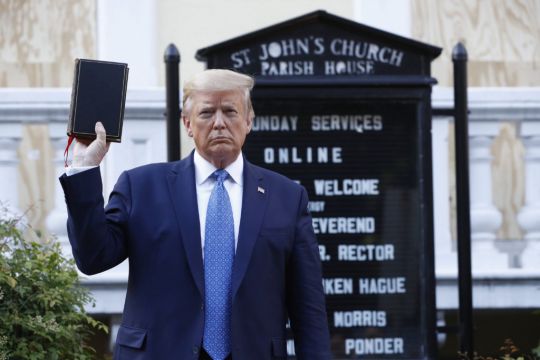An investigation has determined the decision to forcibly clear racial justice protesters from an area in front of the White House last summer was not influenced by then-president Donald Trump’s plan to stage a photo opportunity at that spot.
The report, released by the Interior Department’s inspector general, concludes that the protesters were cleared by US Park Police last June 1 so that a contractor could start installing new fencing.
The demonstrators were protesting over the death of George Floyd, who died after a then-Minneapolis police officer knelt on his neck and pinned him to the ground for more than nine minutes.

A half-hour after the Washington protesters were forced from the area with pepper pellets and flash-bangs, Mr Trump walked across Lafayette Park amid the lingering scent of pepper spray and delivered a short speech while holding a Bible in front of St John’s Church.
Park Police officials had already planned to clear the area and “had begun implementing the operational plan several hours before they knew of a potential Presidential visit to the park,” Inspector General Mark Lee Greenblatt said in a statement accompanying the report.
“We determined that the evidence did not support a finding that the USPP cleared the park on June 1, 2020, so that then-president Trump could enter the park.”
The report determined that the decision to clear the protestors was justified, but that law enforcement agencies on the scene failed to effectively communicate with each other and failed to communicate warnings to the protestors about the impending crackdown.
The conclusions, which deny any political influence on decisions and cite fog of war confusion for any missteps, are likely to be dismissed as insufficient by critics of last summer’s crackdown.
Lafayette Park, the Washington nexus of the last summer’s national wave of racial justice protests, is under Park Police jurisdiction; that agency falls under the Interior Department.
The new report focuses on the Park Police decision-making and its complicated interactions with various law enforcement entities, including the Secret Service and the Metropolitan Police Department.
It points out that “the USPP and the Secret Service did not use a shared radio channel to communicate” and determines that “weaknesses in communication and coordination may have contributed to confusion during the operation”.







